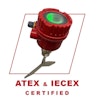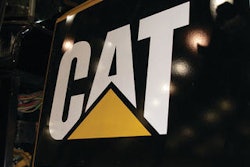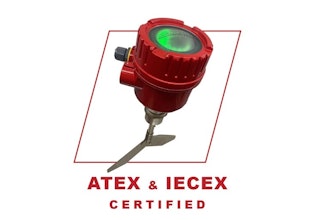By the mid-1980s, the Information Age was in full bloom. Information processing had moved to the desktop, and the Internet was starting to ramp up. A hard drive holding an astonishing 2.5 gigabytes had been introduced by IBM in 1980 — carrying 500 times more data than anything else available at the time (though less than we now carry on our keychain.) By the middle of the decade, computational price/performance was following Moore’s law, doubling every 2 years or so while also pushing data storage capacity into the petabyte range.
Nature abhors a vacuum. And as computing power and data storage capacity have advanced in the succeeding decades, the amount of information has swelled to keep pace. Paraphrasing Dr. Ian Malcolm from the movie Jurassic Park, the industry has been so preoccupied with whether or not it could collect all the data, it hasn’t stopped to think if it should.
Today, in responding to customer surveys of the process industries, engineers and operators tell us they have all the information they need. They just want help in figuring out what to do with it.
Filtering the noise
Information without context is noise. The best way to filter that noise is to ensure that each plant function — operations, engineering, maintenance, safety, management etc. — has clear, up-to-date information on how it can contribute most effectively to the safe, successful operation of the business. Although each role operates within multiple contexts, we have found that automation systems can assist process plants most in the following areas:
- Increasing production value
- Reducing costs of raw materials and energy
- Improving plant safety and security
- Improving environmental integrity and regulatory compliance
- Empowering the plant workforce
We have covered the strategic application of automation in more depth in numerous other articles and white papers. (See References.) In this paper, we focus on some new features that a modern, state-of-the-art process automation system can add to existing control technology. The goal: not just to inform plant personnel, but toenlighten them with context-rich information — delivering new levels of operational insight for operators, systems engineers, project engineers, maintenance technicians, safety team members and managers.
Operating in context
For operators, the future will likely bring larger and more complex plants. Unfortunately, this can make it harder for operators to understand plant operations deeply enough to handle the increased load. They will have more instrumentation to manage, more data to process and more possible upsets; but at the same time, less-than-strategic application of automation is moving them further from actual operations. Unlike their predecessors, who could view a panelboard to almost instantly receive a picture of what was going on in the plant, today’s operators now rely on workstation screens. They can get more information and usually get it faster — but there are more steps in figuring out where to look.
The modern system must find innovative ways to counter this. For example, the Foxboro Evo process automation system incorporates unique situational awareness libraries. Next-generation HMI templates, they are designed to give operators the context they need to adjust set points or otherwise respond to abnormal situations with maximum speed and effectiveness. These customizable templates are also easier on the eyes than traditional display graphics, using color only to call out abnormalities. The templates improve operator effectiveness, shorten response time, reduce human error and fatigue and ensure that all actions are consistent with company procedures, policies and strategies. Finally (and often crucially for today’s generation of operators), they can be displayed on smartphones and tablets for operation almost anywhere, at any time, depending on the process and the intrinsic safety parameters of the device.
Engineering in context
Remedying production problems based on root cause analysis is a key role that systems engineers play in increasing production value and managing constraints. They must do this in the context of many different systems, each of which may be from a different vendor and each of whose technologies may be changing rapidly. They need to understand those systems well enough to diagnose production problems quickly, then scale immediately to make necessary improvements. Timing is critical. They no longer have the time to analyze detailed sequential flow charts, ladder logic, function block diagrams or structured text to determine what is really taking place in the system. These are abstractions of the actual process — and in many cases, abstractions not created by the engineer who encounters them. These engineers need more intuitive, easier-to-use interfaces.
One modern automation system approach offers engineers the option of using an enhanced version of the SAMA configuration tools that are especially popular in the power industry. These tools present a much higher-fidelity representation of the relevant PID blocks and the flow of data through them. (Figure 1) Such an implementation can also include dynamic filters, which help engineers focus more directly on the control mode in which they are working. Users report that the intuitive modeling of such SAMA tools, combined with the dynamism built into them, can reduce engineering workloads by as much as 60 percent.
Project engineering in context
Project engineers work in a different context. They must deliver new and major upgrades on time and on schedule. The context they need is real-time awareness of changing requirements and of how to manage the cost of the technology required.
Consider choosing an innovatively designed automation system that decouples the configuration layer from the run-time layers, enabling significant portions of the system to be configured and tested in the cloud. This speeds project delivery by enabling engineering in the context of a hypothetical future state. Such a system also supports powerful engineering workbench and project management tools, which can be deployed in the cloud to enable project engineers to work in real-time collaboration with colleagues around the globe.
Maintaining in context
Maintenance technicians working to minimize downtime and keep loops in tune are also confronted with increasing volume and complexity of information. In addition to experiencing the equivalent of alarm floods, they face an ever-increasing amount of process equipment and instrumentation to maintain — often involving products originating from different vendors and using multiple protocols, each with its own toolset and instruction manual.
One recent solution is embodied in the Foxboro Evo system. It addresses these concerns via a Maintenance Response Center, which displays contextualized maintenance alert dashboards comparable to the alarm management systems that operators use. When maintenance alerts sound, the dashboard also helps technicians to know where to start drilling deeper into procedures, inventory and other information they need to solve the problem once it’s identified. Further aiding the process is a HART-enabled Field Device Manager (FDM), which can read the manufacturer’s data from virtually any field device protocol, significantly simplifying diagnostics and repair interventions. The combination of the maintenance alert dashboards and HART-enabled FDM can reduce mean time to repair dramatically. Integration of workflow management also helps maintenance technicians synchronize their activities with others who may be working on, or affected by, the problem.
Grant Le SueurProtecting in context
Safety team members must secure the plant from safety breaches and cyber attacks — and must do so at the lowest cost, but without the slightest increase in risk exposure. We discussed safety in the second paper in this series, when we focused on the role that a modern system plays in maintaining the operational integrity of the plant. A modern system should also help all functions perform within the context of company safety risks and policies.
For instance, the Foxboro Evo system couples a Triconex safety system with the control system. Thus those managing plant controls can work with better information about how and where emergency shutdown capability is being deployed throughout the plant. To change these deployments, they go to a separate interface or request modifications from an engineer dedicated to the safety system — but they have the information they need to work in full awareness of the safety protection levels in operation. HMIs such as the new Triconex Safety View dashboard can provide further context on their company risk profile.
Managing in context
For plant executives and managers, the future will demand more on-the-spot decision-making that could have serious implications for plant profitability, safety and security. Managers will guide the setting of strategies and polices that will make these decisions easier, but they must be confident that the entire plant is executing accordingly. A future-ready automation solution must provide an effective perspective across the enterprise, facilitating better business decisions — faster.
A modern system should provide all components necessary to integrate execution of plant strategies at every level. A template of the operator situational awareness library, for example, could display real-time monitoring of performance against one or more of the objectives mentioned earlier, for example reducing raw material or energy costs. Maintenance alerts could be programmed to prioritize based on achieving those same objectives. An operator interface could warn of safety risks that might be introduced by changes in operations. And workflow engines could connect all relevant functions.
In addition to the individual productivity improvements that the new system can bring to each function, aligning everyone on the same strategic page yields unmatched competitive advantage to those companies that implement it. Some of the References at the end of this paper provide more detail on how that alignment can be achieved.
Ready for anything
Many of the applications that will be needed to manage the future have not yet been developed or even imagined, which is why it is critical to build on an open yet secure system platform. Much like the case with the apps you download for your smartphone or tablet, adherence to common object models means that you can benefit from future-managing applications that haven’t been developed or even imagined yet. The more closely these applications adhere to the standards, the more easily you can incorporate and benefit from them.
In addition to simplifying the delivery of advanced tools and critical run-time applications, a component object-based architecture and layered design can enable easy plug-in of applications built to open computing standards, such as the following:
a. Simulation, modeling and APC software, which support operator training, real-time online optimization and multivariable process control
b. Enterprise manufacturing intelligence, which delivers real-time insight into trends in production and operation
c. Corporate energy management, which helps management deal with fluctuating energy costs and supply
d. SCADA applications that are customized for well field, pipeline, water/wastewater and other applications
e. Enterprise asset management software, which reduces costs through improved diagnostics, inventory management and preventive and predictive maintenance
f. Mobile applications, which deliver real-time procedure guidance to field workers and enable real-time reporting
It all comes back to people
It should be noted that, to date, the Foxboro Evo system is the only modern process automation system that fulfills every technological requirement summarized in this paper — providing the operational insight that workers filling every role in a modern process plant require.
In the final analysis, however, automation doesn’t solve problems; people do. While a future-ready, future-proof process automation system can deliver tremendous competitive and protective benefits, the real strength of the control system is in its application, not its technology. That application is in the hands of the people who use it.
Automation has traditionally meant replacing human activity. Now recent advances in automation technology and the demands of the future have moved the industry into a new age. It is an age in which automation is not replacing operational roles or dumping raw data on people in the plant. Instead, it is enlightening plant personnel with the context-rich information they need, and thus helping them perform their roles better, more safely and with greater gain — for themselves, their employers and the consumers of their products.
About the Authors
Peter Martin, Ph.D, is vice president, business value solutions, for the Software and Industrial Automation division of Invensys, which is now becoming Schneider Electric. He holds multiple patents, including patents for dynamic performance measures; real-time activity-based costing; closed-loop business control; and asset and resource modeling. He has published numerous articles and technical papers and has authored or co-authored three books, including Bottom Line Automation; Dynamic Performance Management: The Pathway to World Class Manufacturing. Martin was named one of Fortune magazine’s “Hero of U.S. Manufacturing” and the recipient of an ISA Life Achievement Award. Martin has a bachelor’s and a master’s degree in mathematics, a master’s degree in administration and management, a Master of Biblical Studies degree, a doctorate in industrial engineering and doctorates in biblical studies and theology.
Grant Le Sueur is the director of product management for Invensys Foxboro control and safety software offerings, including external marketing, product planning and development. He has more than 28 years of industry experience. He began his career in the pulp and paper industry serving as an instrument engineer at Tasman Pulp and Paper Company in New Zealand. He has served as process control engineer at Siemens AG, where he was responsible for DCS and PLC implementations. He is also certified as functional safety engineer.
References
Martin, Peter G., Walt Boyes, and Kaoru Maruta, Real Time Control of the Industrial Enterprise, New York, NY: Momentum Press, 2013.
Martin, Peter G., Bottom-Line Automation, 2nd ed., Research Triangle Park, NC: International Society of Automation, 2006.
Martin, Peter G., “Real-Time Strategic Empowerment for Improved Profitability,” white paper, Invensys Operations Management, 2012.
Martin, Peter G., “Real-Time Profit Control: Driving Profitability in the Dynamic Industrial Environment,” white paper, Invensys Operations Management, 2011.






















